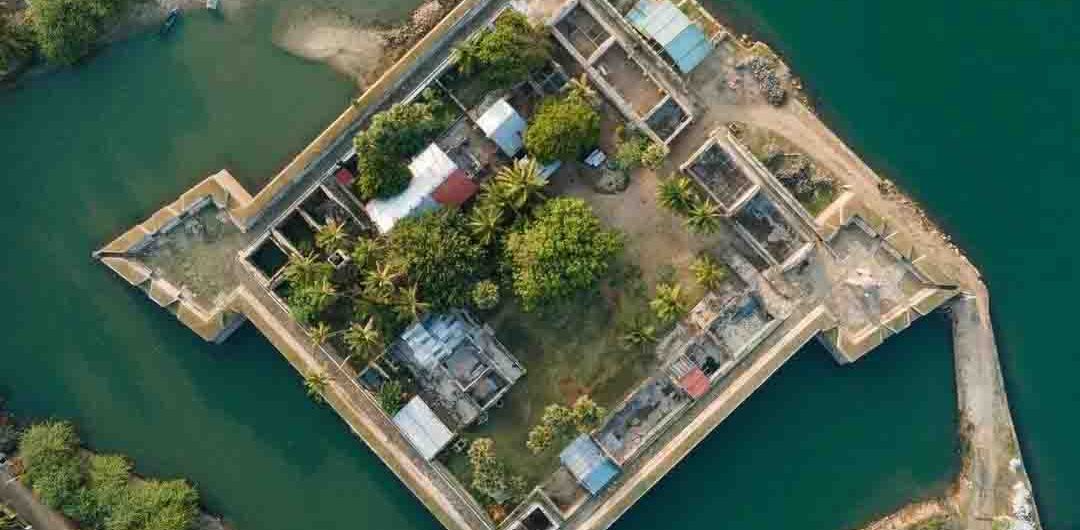The Lankathilaka Image House in Polonnaruwa, also known as the Lankathilaka Temple, is a striking example of Sri Lanka’s medieval architectural brilliance. Nestled within the historic Polonnaruwa Ancient City, this iconic site is a masterpiece of religious devotion and craftsmanship. If you’re visiting Polonnaruwa, the Lankathilaka Image House is a must-see for its historical, artistic, and cultural significance.
.
What is Lankathilaka Image House?
The Lankathilaka Image House was built by King Parakramabahu I in the 12th century during the height of Polonnaruwa’s glory. This towering structure was designed to house a colossal Buddha statue, serving as a place of worship and reflection for devotees.
The structure is 17 meters (55 feet) tall, with massive brick walls and an intricately carved façade that speaks to the advanced architectural and artistic skills of the time. The Buddha statue inside, although partially damaged, still conveys an aura of serenity and spiritual power.
.
Why is Lankathilaka Image House So Special?
- Impressive Scale: The towering walls and colossal Buddha statue make it one of the grandest image houses in Sri Lanka.
- Architectural Detail: The blend of Buddhist and Hindu architectural influences highlights the religious harmony of the Polonnaruwa era.
- Cultural Significance: The site represents the dedication of Sri Lanka’s ancient kings to preserving and promoting Buddhism.
.
What to See at Lankathilaka Image House?
- Towering Buddha Statue: Although partially ruined, the 14-meter (46 feet) tall Buddha statue remains the centerpiece of the temple.
- Ornate Entrance: The elaborately decorated entrance features carvings of deities and guardians, showcasing exquisite craftsmanship.
- Massive Brick Walls: The 17-meter-high walls, still intact, demonstrate the engineering prowess of ancient Sri Lanka.
- Surrounding Ruins: The temple is part of a larger complex with additional stupas, shrines, and stone carvings.
.
How to Visit Lankathilaka Image House?
The Lankathilaka Image House is situated within the Polonnaruwa Ancient City, making it easily accessible as part of a tour of the site’s many attractions.
Getting There:
- From Colombo: The journey to Polonnaruwa takes approximately 5 hours by car.
- By Public Transport: Trains and buses connect Colombo to Polonnaruwa, where tuk-tuks or bicycles can take you to the ancient city.
- By Bicycle: Renting a bike is a popular and eco-friendly way to explore Polonnaruwa, including Lankathilaka.
Tips for Visitors:
- Best Time to Visit: Early morning or late afternoon is ideal for cooler weather and fewer crowds.
- Dress Modestly: As a religious site, wear attire that covers your shoulders and knees.
- Entry Fee: The site is included in the Polonnaruwa heritage ticket, costing USD 25 for foreigners.
- Photography: Capture the beauty of the temple, but respect its sanctity by refraining from climbing or inappropriate behavior.
.
The Legacy of Lankathilaka Image House
The Lankathilaka Image House in Polonnaruwa stands as a testament to Sri Lanka’s rich cultural and religious heritage. Its towering walls, intricate carvings, and serene Buddha statue continue to captivate visitors from around the world.
For history enthusiasts, art lovers, and spiritual travelers alike, this ancient temple offers a unique glimpse into the past and a deeper appreciation for Sri Lanka’s timeless traditions. Be sure to include the Lankathilaka Image House in your Polonnaruwa itinerary—it’s an experience you won’t forget!










